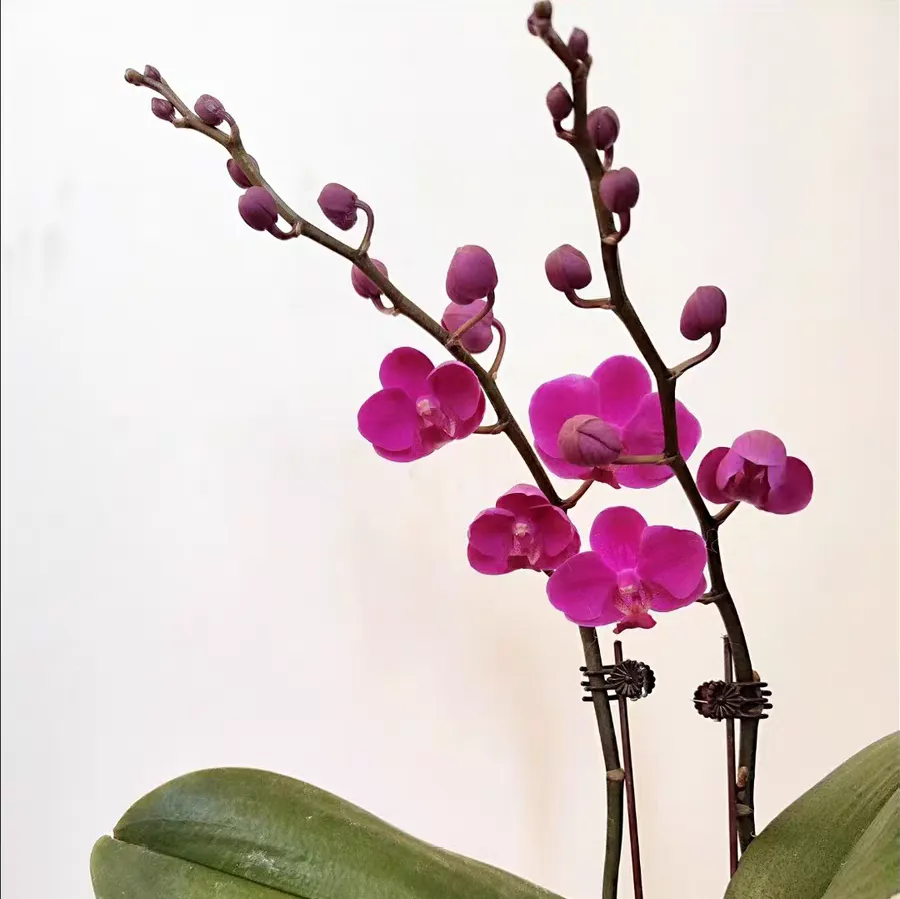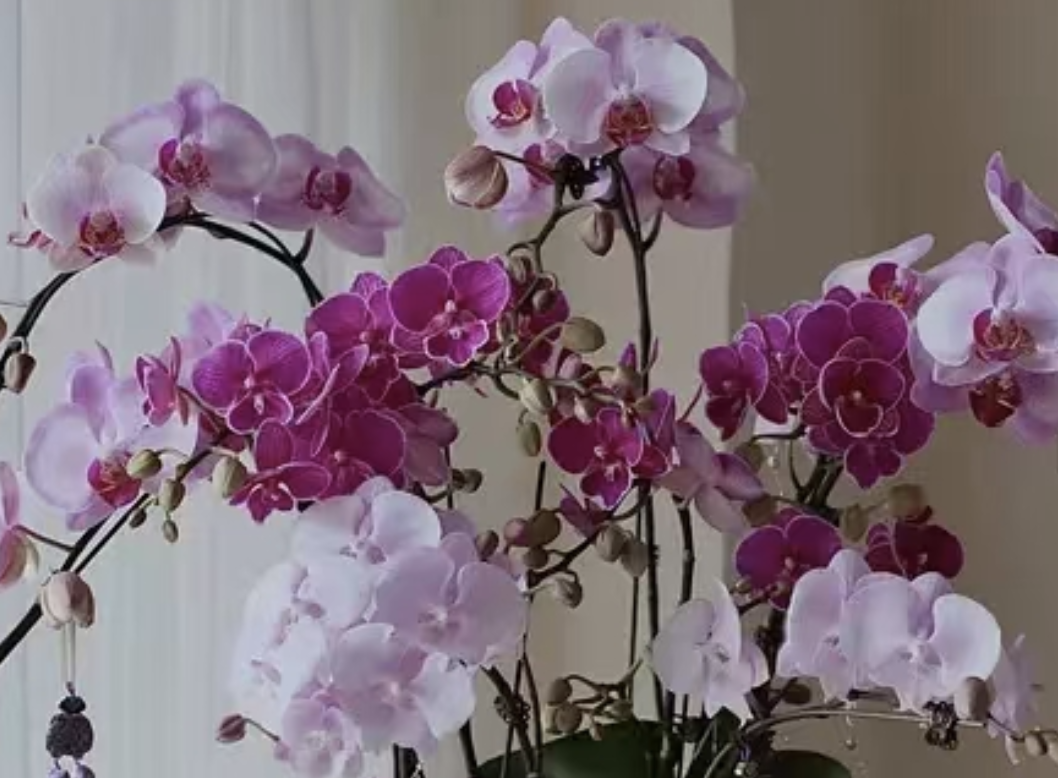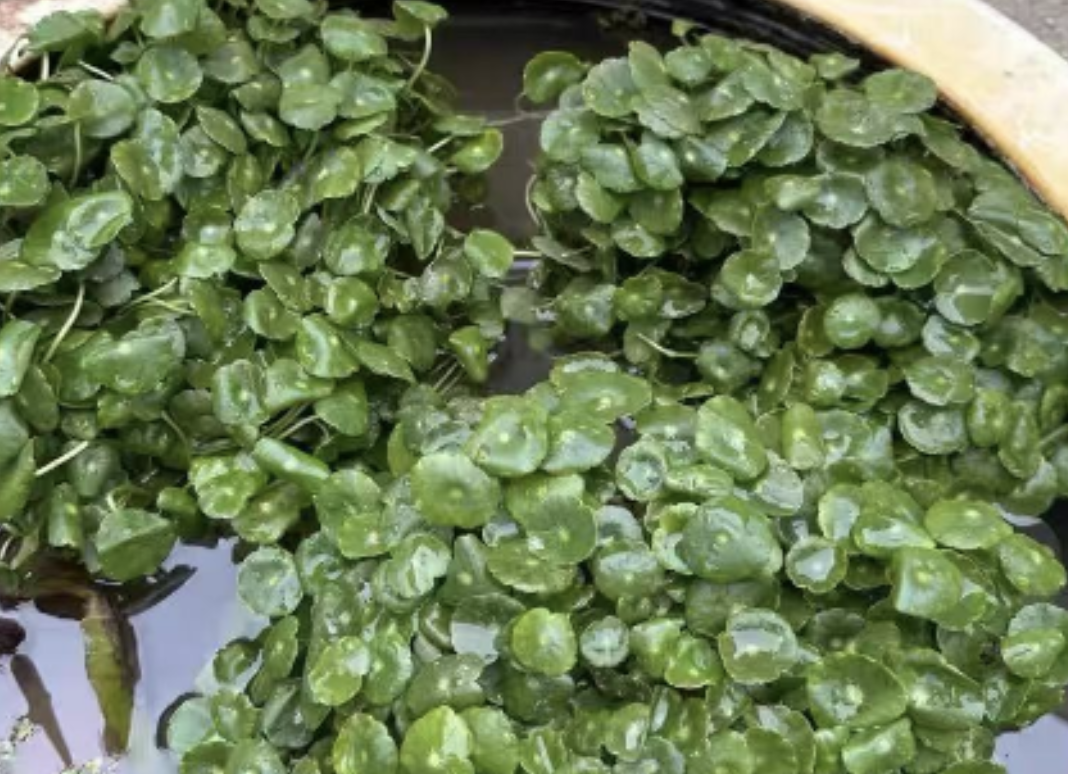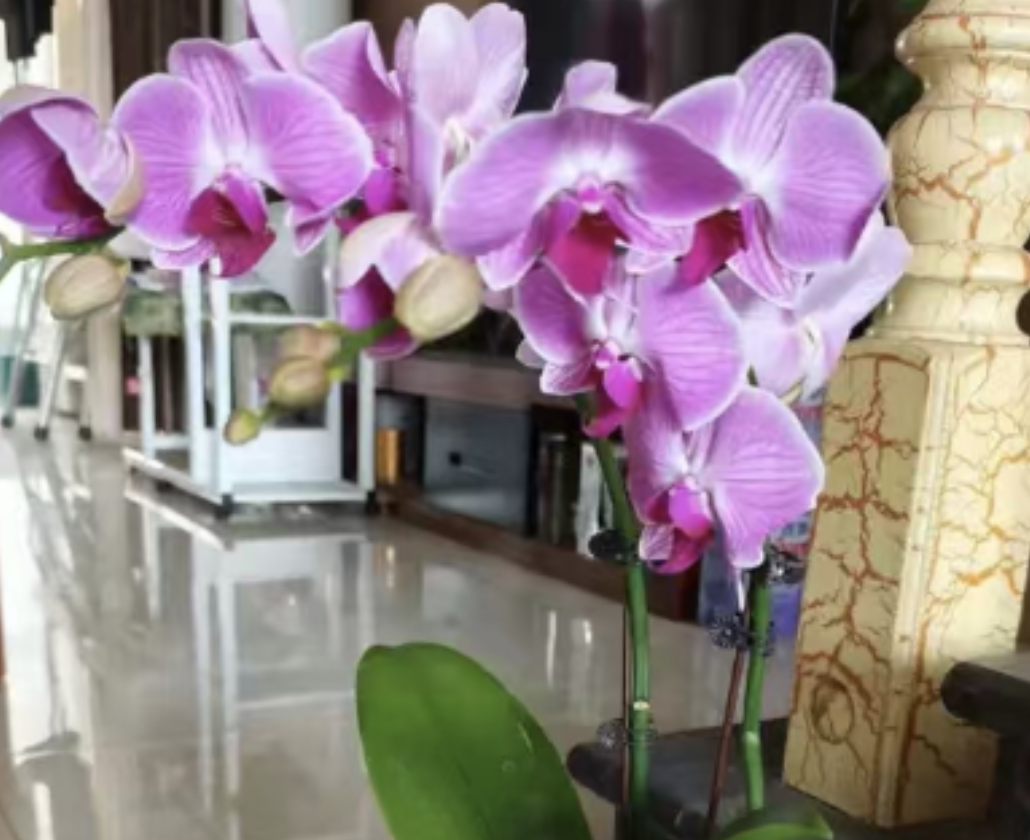Can Phalaenopsis be grown outdoors? Absolutely! Just shelter it from high temperatures in summer, make the most of sunlight in spring and autumn, and prevent root rot in the rainy season—even beginners can handle it easily!
### Temperature
Phalaenopsis thrives best in temperatures between 15-30℃. In winter, if the temperature drops below 10℃, you must set up a warm shelter (enclose it with transparent plastic film, and remember to leave ventilation holes), otherwise it may get frostbite. In summer, when the temperature exceeds 35℃, it must be moved indoors. Exposed to direct sunlight and high temperatures outdoors, the roots will rot in no time!
Tip: Keep the day-night temperature difference at 8-10℃ (e.g., 25℃ during the day and 17℃ at night). This will make flower buds sprout in large numbers, leading to a denser bloom next year!
### Light
Spring and autumn are the "golden growing seasons" for Phalaenopsis. The sunlight from 7-9 a.m. and 5-7 p.m. is the softest. Let it get 3-4 hours of sunlight every day, and the leaves will glow with a bright green. When the noon sun is scorching, be sure to set up a 50% sunshade net (available online for just over ten yuan), allowing only scattered light to pass through. Otherwise, the leaves will get sunburn spots, ruining their appearance!
### Medium + Drainage
Never use ordinary garden soil! Phalaenopsis has "air roots" that need to breathe. It is recommended to use腐熟 pine bark + sphagnum moss (1:1 ratio), which is loose and retains water well. The flowerpot must be placed on an elevated flower stand (wooden or metal), with the bottom of the pot at least 10cm above the ground. This way, excess water can flow away quickly when it rains, eliminating the risk of root rot!
### Seasonal Management
- **Summer (June-August)**: During high-temperature periods (12 p.m.-4 p.m.), spray around the flowerpot 2-3 times a day. The evaporation of water will take away heat, keeping the air humidity at 60%-70% to prevent leaf tips from drying out. If your yard is in a heavy rain area, you must set up a rain shelter (using transparent glass or plastic panels, slanted for easy drainage). If rainwater stays in the pot for more than 2 hours, the roots will suffocate due to lack of oxygen!
- **Rainy season/typhoon days**: Before the typhoon season, secure the flowerpot to the flower stand with ropes to prevent strong winds from blowing it over. If it rains continuously for more than 3 days, spray carbendazim (diluted 1000 times) as soon as the weather clears, focusing on the back of the leaves and the surface of the potting medium to prevent black spot disease and stem rot!
- **Spring and autumn**: In addition to light management, you can fertilize Phalaenopsis at this time. Use diluted orchid-specific fertilizer (balanced in nitrogen, phosphorus, and potassium) every 2 weeks. Applying thin fertilizer frequently will make the leaves thicker and store enough energy for blooming!
- **Winter**: The temperature in the warm shelter should not exceed 25℃; excessive warmth will disrupt its dormancy. When the air is dry, place a basin of water in the shelter (do not water the flowers directly) to maintain humidity at around 50%, so the leaves won’t wrinkle!
In fact, Phalaenopsis is not that delicate. The natural light and ventilation in an outdoor environment can make it stronger. Try these methods, and you’ll be rewarded with a yard full of blooming Phalaenopsis next spring!
Can Phalaenopsis be grown in an outdoor yard?

Share with
Tagged in :




Leave a Reply